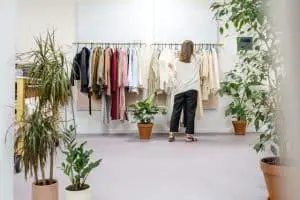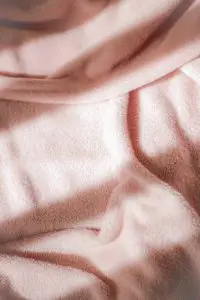Are you instantly drawn to fabric designs every time you see a beautiful dress? If this is you, you should consider a career in textile design. Textile designs involve several clothes and fabrics, creating a unique work of art. Textile design combines color, treatments, patterns, perspective, and formation.
Textile design is simply the process of using different dyes to color fabrics. This has been one of the first textile arts and undoubtedly remains the popular method of adding color to clothing or home décor. Textile design is an advanced technological technique that interlaces yarn fibers or threads to give a flexible yet decorative fabric. It has become an integral part of the industry and others, including interior design, fine arts, and fashion.
Textile designing is interesting work that needs collaboration and creativity to change trends in style. This design falls into three main branches, which use different methods to produce unique fabrics for the market. However, before we dive into the three branches, let’s quickly learn about the history and concept of textile design.
Textile Design – The History
The history of textiles dates back to thousands of years when we had cotton and silk from China and India. However, we had African textiles such as leather, fur, and hides dating back to 5000 BC. At this time, people promoted trade networks between Asian, Middle Eastern, and European countries. With these trade networks, textiles became more expensive.
As early as 4200 BC to 2600 BC, the ancient Egyptians made linen fabrics and created dyed threads and materials in 2900 BC. Although, many people believe that the history of fabric design originated in China around 3630 BC. The ancient Chinese people used silk, hemp, and cotton to create fabrics such as robes, shoes, sandals, and hats. They also made damasks and silk fabrics with designs.
In India, however, early textiles come from cotton and silk, dyed with vegetable dyes. In the 17th century, calico designs from India had become very popular globally. Although we are unsure who designed these early textiles, we are sure someone decided on the color, weave, and patterns.
Technological advancement in dyeing methods opened up new markets in the fourteenth century. These processes invented in one part of the world became popular in other countries. Still, there was a high production of high-quality damask in Italy in the fourteenth century. New markets opened up as well for European textiles.
The textile trade has existed for centuries and is one of the oldest trades. Although, the textile trade, which started with just a simple barter system, has transformed over the years. The textile trade helped spread inventions, ideas, and cultures across continents.
Textile Design – Concept
Textile represents cultural, religious, social, economic, and political identity based on history. It is used as a medium to express, relate and hold valid significance in any influential and powerful events. It has the power to identify members of a specific community and can also influence the cultural environment.
Textile design, with its understanding throughout the past centuries, has evolved. It is no longer a medium of ornamentation but also a practice supporting development and interdisciplinary participation. It is a core field of knowledge that simplifies the functioning and efficiency of different industries such as interior, fashion, healthcare, and other industries that rely on it.
As earlier stated, textiles are just about anything made of fabrics, fibers, or yeans. However, for these textiles to be useful, they must have specific characteristics. These characteristics include abrasion resistance, flexibility, moisture-controlling characteristics, and strength. In addition, some of the textiles used in materials offer protective features like helmets or bulletproof vests used by soldiers or cut-resistant gloves used by butchers. Other fabrics used include gowns worn by nurses and doctors, sound absorption covering for studios, and carpeting for school.
Now, textile design is a creative field that encompasses all the processes of creating unique designs printed on the fabrics. The textile design includes not only pattern-making but also manages the production process. It is all about the creativity of bringing the right color, pattern, and texture to produce a unique design. It is also all about recognizing the fluctuations in trends and understanding all textile techniques. The endpoint of textile design is to bring unique and outstanding fabrics for different purposes.
Textile Design – What Are the Types?
Textile designs are available in several industries, including fashion, art, and technology. Among the different types of textile design are two main ones, usually for home goods and clothing industries. Think about it for a second, and you will realize that these textiles areas are quite different. You might want a bold patterned floral design on your curtains or bedsheets but not on your clothes. You might want something more subtle on your dresses than on your tablecloths. This is why we have different textile designers who specialize in various fields. While some specialize in textile designs for homes, others may specialize in textile designs for clothing fabrics. To better understand these types of designs, let’s look at the three different types of textile design.
Printed Design
You can produce these textile designs by applying several printing processes to fabrics. These processes include printing, screen printing, digital printing, rotogravure, relief printing, and transfer printing. Additionally, these listed processes use different colors and inks to print aesthetics, motifs, and repetitive styles on fabrics. People usually use printed textile design processes in the interior design of homes, fashion, paper, and apparel industries.
Printed textile design can be sub-divided into four categories. In simple terms, these categories are geometric, floral, conversation, and world culture. Geometric printed designs consist of abstract thesis and inorganic characteristics such as tessellations. On the other hand, floral printed designs include any flower, botanical, or plant theme.
Conversation-printed design, on the other hand, fit more than the other listed categories. These designs represent any image that refers to popular icons of a specific period or season. The season or period could be unique or somehow challenge our perceptions of things. Finally, culture printed designs represent distinct geographical or ethnic cultures. Each of these designs contains more specific and unique individual styles.
Woven Design
This category of textile design comes from the practice of weaving. Weaving practices usually produce fabrics by interlacing horizontal and vertical yarn at right angles. Several looms make a weaved fabric and are now majorly produced using an advanced jacquard loom.
You can produce textile designs using different textures, colors, and shapes in the weaving world. All of these work to create a unique stylized fabric. This process is not limited to lines, yarns, and synthetic fibers, but also a wide range of yarn types is also available with this design. So how do you produce a woven fabric? Simple! You first illustrate the threading sequence and then visualize everything drawn on graph paper, a reference paper.
Next, you select a knitting structure that manages the visual design that you will eventually produce. One of the most common weaving processes is the plain weave. Here, the yarns produce a firm and flexible multi-use fabric with irregular tight textures. Another type of weaving process is the Twill weaves which alternatively uses warp lines created by floating left or right. The Twill weave process eventually produces soft fabrics suited for designers in the apparel and fashion industries.
Knitted Design
Fabrics made from knitted textile design exist when there is an inter-looping of yarns or inter-meshing of loops. Knitted fabrics are more flexible than others, and you can construct them into smaller pieces. There are two types of knitted textile design: warp and weft knitting.
The weft-knitted fabric involves an unbroken loop structure that interlocks or extends horizontally. This design produces materials that are much suitable for fashion clothing. This is because the manufacturers weave the yarns in one continuous length. The weft-knitted textile design is the most common type and can be produced using hand-knitted needles or knitted domestically. You can also manufacture weft-knitted fabrics using industrial knitting machines.
On the other hand, warp-knitted fabrics are made from zigzagging loops, producing durable fabrics that connect vertically. Machines produce these fabric designs using warp yarns for each wale. Warp-knitted fabrics are relatively easy to sew and resistant to runs. Warp-knitted fabrics include underwear, sportswear, mesh, corsetry, curtains, and trims.
Since we now understand the three types of textile design, let’s look at the importance of textile design.
Textile Design – Importance
Textile designs are generally indicated and embedded in the fabric’s structural style and the fabric. Once a design has been created, it becomes impossible to swap. There are several importances of textile designs regardless of the purpose or industry.
The textile design makes a fabric or cloth look aesthetic. Fabrics are decorated with yarns of different colors, making them more presentable and unique. Using these multicolored yearns or single-color yarn fabricates variation in the fabric’s design.
Textile design has become an essential section of the textile manufacturing process. Textile design works to spotlight and identify a band or designer’s work. Likewise, to identify a particular brand, culture, or profession, one must look over the textile design of that particular fabric.
The majority of middle-aged men and women now evade more glamorous and candescent apparel. Instead, they go for the fabric’s design, as they choose the structural design. However, the teenage or youth generation focuses more on textile design than the decorative design of materials.
The structure of any fabric depends solely on the fabric’s design. The design takes fabrics to an entirely new level. Textile design is one of the most important things that anyone involved in any art, technological, or clothing industry looks out for. Textile design sets a new trend in the market regardless of industry.
Final thought
Textile design has become an essential aspect of the manufacturing process. Therefore, fashion or interior brands must have a unique print or surface pattern for brand identity. The primary structure of any fabric depends on the design. Textile design is one of the major things that anyone looking to go into the clothing or interior business looks out for to bring new trends. Before designing any cloth, you must have an idea of its textile design. Understanding the history, concept, types, and importance of textile design will help you make better decisions when choosing designs for your fabrics.








